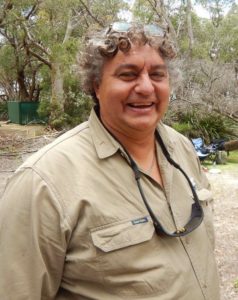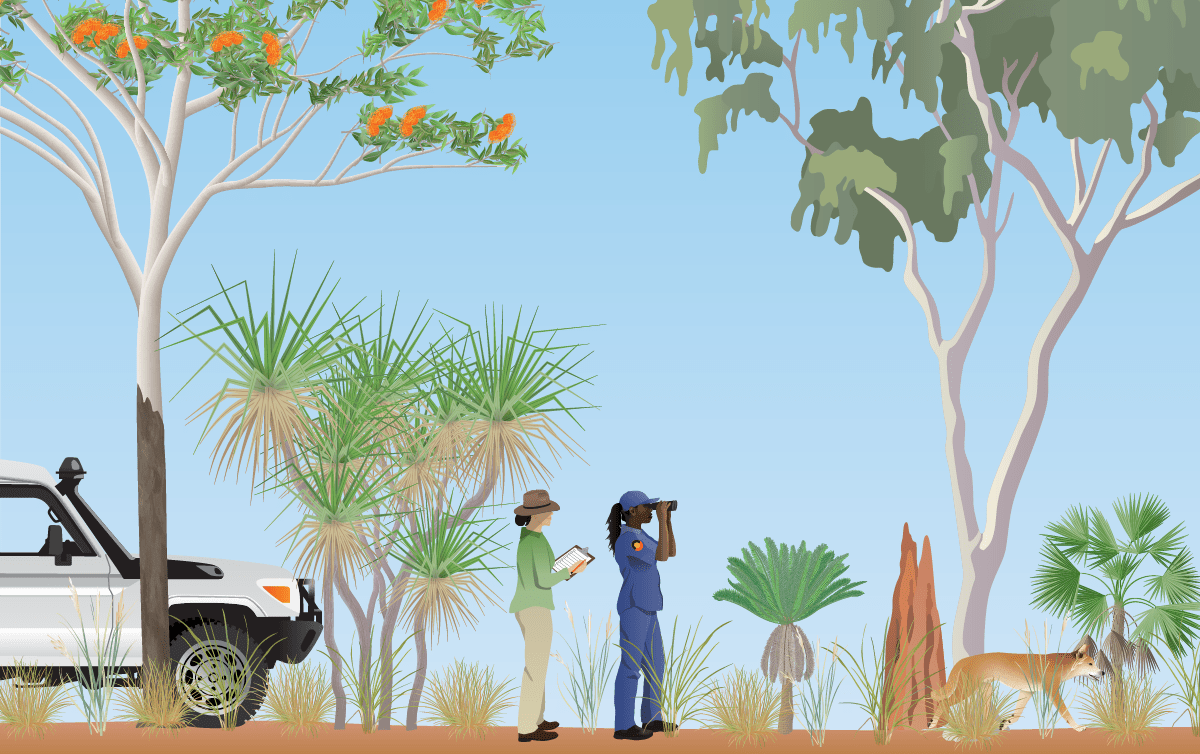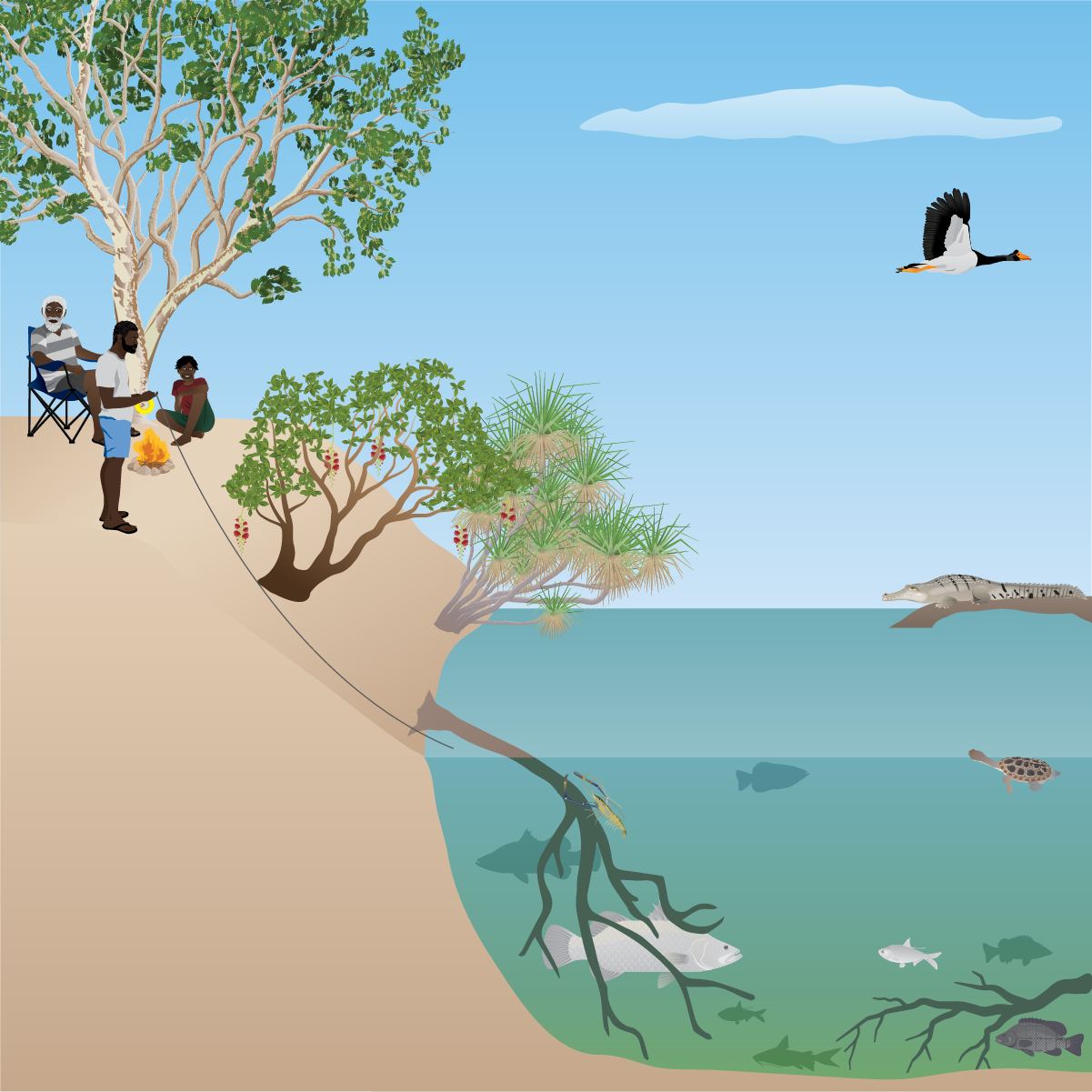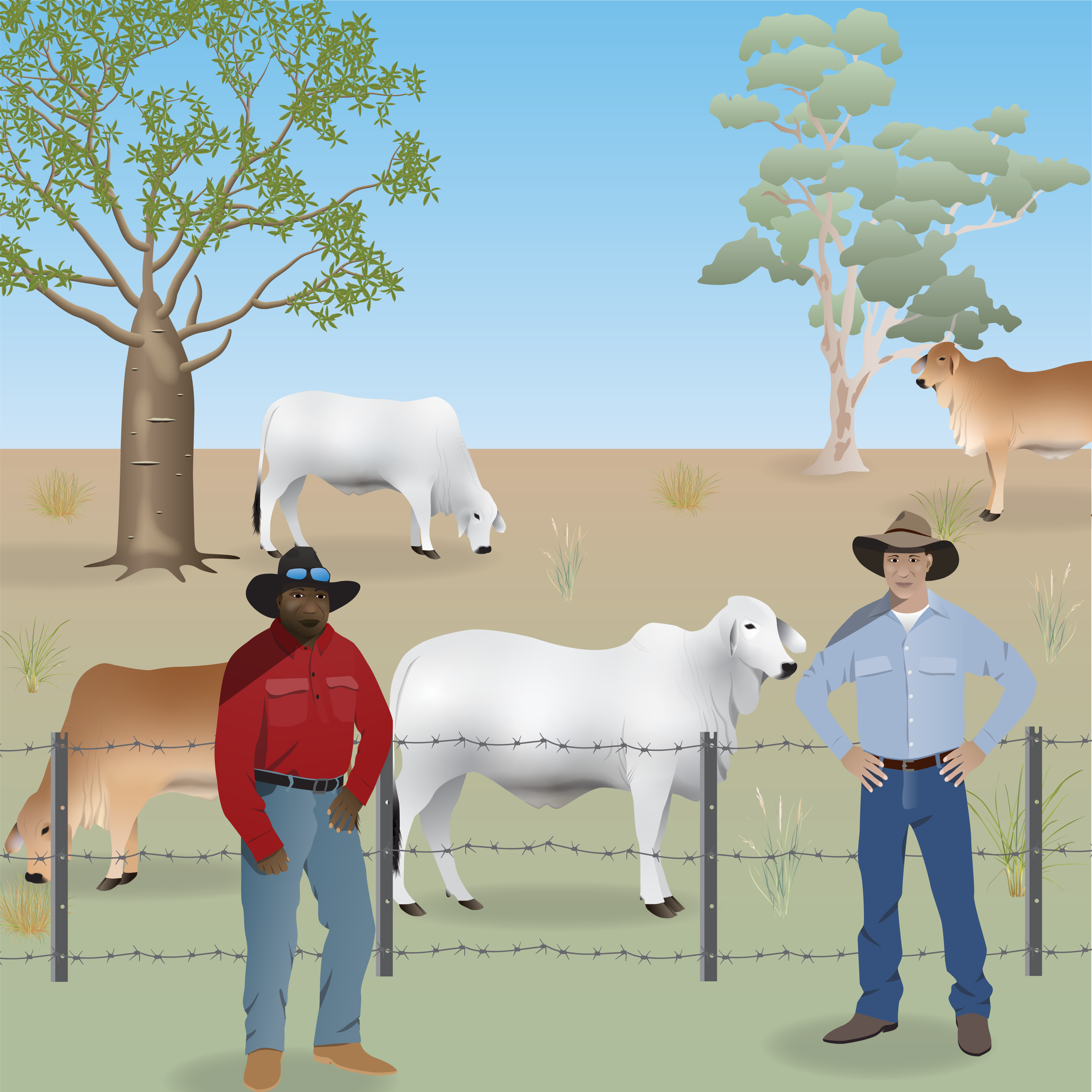1 March 2021
By Cristy Burne for CSIRO’s Double Helix magazine.
More than 250 languages are spoken by Australia’s First Nations peoples. So when it comes to sharing stories and ideas, finding the right words can be tricky. But what if we didn’t need words at all? That’s the idea behind a new set of interactive symbols. Each symbol has been specially designed to help communities and scientists across northern Australia share their knowledge.

Stephen works with people from many different communities.
“There are more than 25 different Indigenous words for bilby,” says Professor Stephen van Leeuwen, a Noongar man and the Indigenous Chair for Biodiversity and Environmental Science at Curtin University. But when you show someone a picture of a bilby, suddenly we’re all speaking the same language. “A picture really is worth a thousand words,” Stephen grins.
The language of pictures
Stephen’s job is to help Western and Indigenous scientists share their knowledge to help preserve our country’s biodiversity. He worked with Jane Thomas, a science communicator with the Northern Australia Environmental Resources Hub of the Australian Government’s National Environmental Science Program, to develop the symbols. “The symbols are a more powerful method of communication,” says Stephen, who is part of the Hub’s leadership team.
For many mobs, English is a third or fourth language. We can use symbols to get stories across far better than text. It’s communication without words. It really unlocks the flow and interchange of knowledge.
– Stephen van Leeuwen

The symbols make it easy to illustrate the work of scientists and rangers.
Symbols and ideas
Each symbol was developed as it was needed. “It’s about building relationships of trust, and two-way communication,” says Stephen. “It’s about being respectful to communities, Elders and kids. What are their aspirations? Their wants? Their messages?”
The symbols can be a culturally safer way to communicate with Indigenous people than using photos, which can contain identifiable individuals or places. I don’t think it’s ever anybody’s intention to show photos of people who have passed away, or of sacred sites, but it can happen unintentionally. The symbols are relatable and representative without being too specific.
– Jane Thomas
Stories from the north
Stephen and Jane hope the symbols can help bring Australia’s north to life. “Darwin is the only capital city in northern Australia,” says Stephen. “Decisions are always being made by people down south about what should happen in the north. These symbols are a way for people to tell the stories of the north.”

There are lots of animals to use, including fish, birds and reptiles.
Try it!
Could you express your dreams, tell a story, or ask a question using symbols? Why not give it a try? These symbols are free to download as part of the Northern Australia Environmental Resources Hub library, a collection of more than 100 symbols created especially for communicating the science of northern Australia. You can use them to do everything from making posters to illustrating projects. “You’ll find symbols of invasive species like feral pigs and stinking passionflower, native plants and animals like boab trees and bilbies, and people like pastoralists and Indigenous rangers,” says Jane.

It’s not just for scientists! Many jobs are represented.
To download the symbols, create your free Northern Hub account online.
Want to know more about the Resilient Landscapes Hub's activities and our research into practical solutions to environmental problems? Stay informed about activities, research, publications, events and more through the Hub newsletter.
"*" indicates required fields